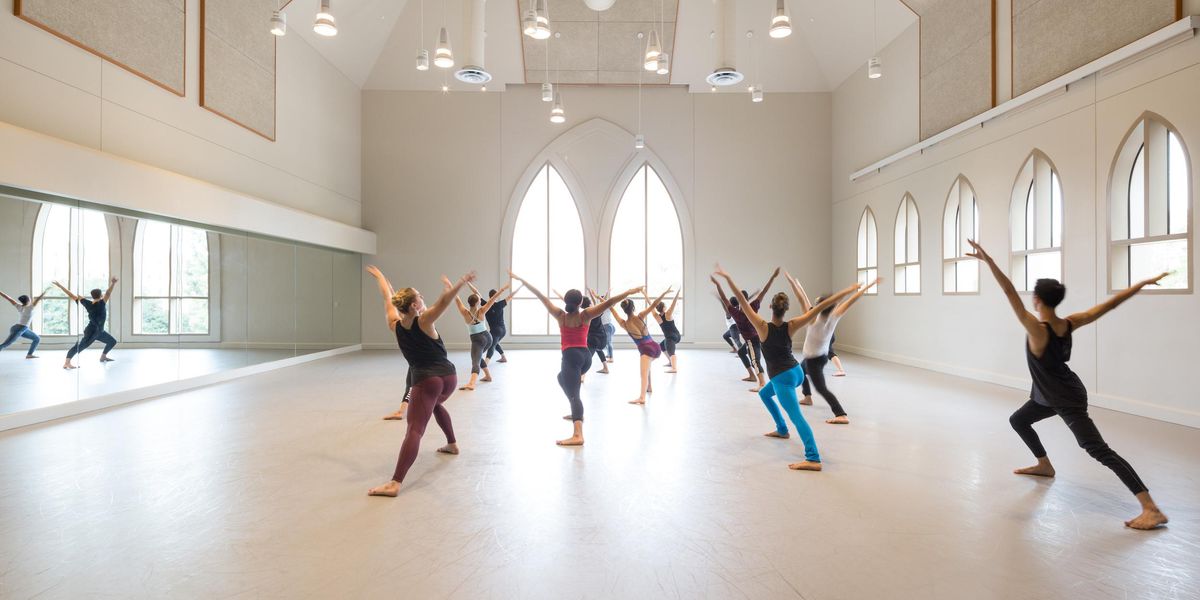Movement in the Moment
Choose an improv method that will challenge your weaknesses.
Freedman (left) practices a phrase in the studio. Photo by Anna Maynard, Courtesy Helen Simoneau.
Often, the key to growing as a dancer is getting out of a mental or physical rut. One solution? Improvisation. Its unpredictable, uncomfortable challenges can help dancers find their voices while fostering playfulness and body awareness. But each style of improvisation—Gaga, Forsythe and contact are among today’s most popular choices—has its own strengths. Whether you’re looking to improve your partnering skills, inspire movement creation or become a more confident performer, choosing a method that targets your weaknesses can help you discover something new about yourself.
Gaga
Uninhibited and often wild, the stylistic qualities of Ohad Naharin’s movement language Gaga are popular in choreography today. Naharin’s work is performed by his Batsheva Dance Company (see page 48) and repertory troupes like Cedar Lake Contemporary Ballet, and has inspired flocks of successful choreographers like former Batsheva dancers Hofesh Shechter and Andrea Miller. “Gaga is certainly a window into a whole aesthetic, which seems to be pretty widespread at the moment,” says Ariel Freedman, a former Batsheva dancer who teaches Gaga classes internationally. “It’s very much about connecting to your untamed and unpredictable nature. And playing with the very fine line between being in and out of control.”
Dancers enjoy Gaga classes because they’re physically and mentally engaging from start to finish. But what’s most difficult, for first-timers and experienced dancers alike, is letting go of the presentational quality that traditional training develops and embracing the style’s raw nature. “Allow yourself to be very silly, perhaps absurd—the many versions of you that are less often asked for in a technique class,” says Freedman. Gaga can help dancersovercome shyness and insecurity, which leads to making bold choices and dancing with abandon—all helpful whether you’re choreographing, auditioning or taking the stage.
For Freedman, exploring her body’s range in Gaga helped her become a more versatile and flexible dancer. “In the time since I’ve been doing Gaga, people comment on how unrestricted, how unbound my body is physically.” She credits this as much to Gaga’s mental training as its physical methods. “My mind and body together experienced a kind of unbinding, a release.”
Contact Improvisation
At its finest, contact improvisation is complex and daring, with partners working through lifts, falls and counterbalances together. Because the study incorporates principals of martial arts (aikido and tai chi), dancers become very aware of energy, effort and the space around them.
One of contact’s great learning curves is being able to trust another person with your body weight during moments of disorientation. “It can be quite scary for someone whose training has taught them to balance,” says Chris Aiken, a dance professor at Smith College who studied under improv great Nancy Stark Smith. Dancers must rely less on visual stimuli and more on physical sensation. “When you practice contact, as much as 80 percent of what you’re responding to is touch, and that has a way of reorganizing your perceptual systems,” he says.
Because of this shift, Aiken says it’s important to make peace with the fact that expertise takes time. Eventually, you’ll take away fine-tuned partnering skills with a much sharper sense of exactly how much force a movement requires. This can make for more dynamic dancing—with or without a partner—and a heightened perception of how to adapt to the bodies around you.
Jill Johnson and dancer Sokvannara (Sy) Sar work through a Forysthe modality. Photo by Rachel Papo for Dance Teacher.
Forsythe Improvisation Technologies
Although William Forsythe designed his movement language on ballet dancers, its principles can boost anyone’s creativity. “It’s beyond a stylistic approach—it’s an approach to the creative process,” says Harvard University dance director Jill Johnson, who danced for Forsythe’s Ballett Frankfurt. “We’re cultivating the ability to respond to any given moment.” With more than 130 modalities, or prompts, such as “room writing,” which involves tracing an imagined room with a specific part of your body, the possibilities for invention are endless.
A challenging—and rewarding—element of Forsythe’s technique is allowing each body part to process movement possibilities on its own. For instance, drawing a shape with your knee is a completely different experience than drawing it with your nose. But through these isolated studies, dancers discover the full range of their bodies, and learn how to initiate movement from unexpected places. “The hope is that the dancers will be empowered with new forms of self-expression that they can utilize as an artist, building a library of resources,” says Johnson. “And it can be greatly individualized. Some may learn through imagery and others may find a structural sense that helps them soar.”




